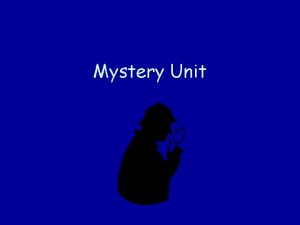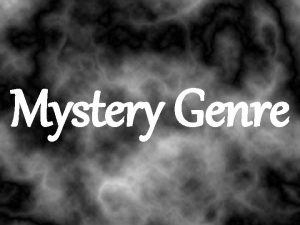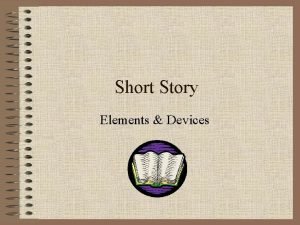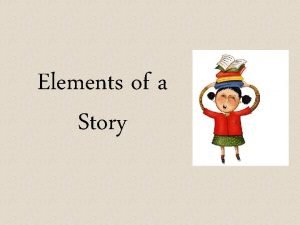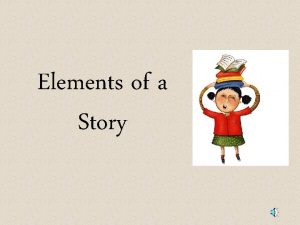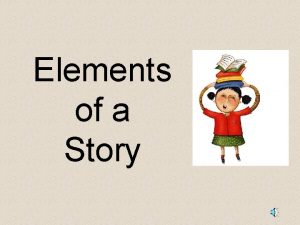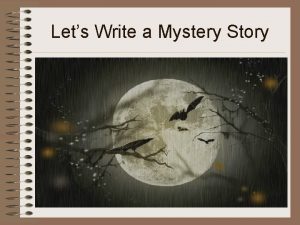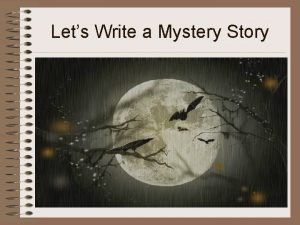Mystery Unit Elements of a Mystery Story or















- Slides: 15

Mystery Unit

Elements of a Mystery Story or Novel Characters Suspect: character(s) who may have committed the crime or caused the problem Detective: character(s) trying to solve the mystery. Sleuth is another word for detective. Witness: character(s) who saw the crime being committed

Elements of a Mystery Setting • Settings (i. e. haunted houses, city streets, deserted areas, dark streets, alleys, warehouses, etc. ) • Mood setters (foggy nights, cemeteries, creaking gates, footsteps, thunder, wind, screams, blood, etc. )

Elements of a Mystery Usually, the plot includes one of the following: • a problem that needs to be solved • an event that cannot be explained • a secret • Hidden evidence • something lost or missing • a crime that has been committed

Elements of a Mystery • Red herrings: false or misleading clues that lead a detective or reader off track or make it more difficult to solve the mystery • Suspense: a state or feeling of excited or anxious uncertainty about what may happen. • Foreshadowing: words or phrases that give hints that set the stage for a story to unfold and give the reader a hint of something that is going to happen without revealing the story or spoiling the suspense.

Additional Mystery Vocabulary to Know • alibi – an excuse offered by a suspect stating he/she was elsewhere when a crime was committed • crime – an act that is against the law • evidence – something that might help prove a fact in a trial • innocent – not guilty • interrogate – to question formally • investigate – to observe or study by close examination and inquiry

The “Commandments” Mystery and detective fiction is often judged by how well it satisfies the conventions of its genre -- that is, how well it follows the unwritten "rules" of how detectives, criminals, suspects, and clues are presented. In the 1920 s, writer Ronald Knox made a list of "commandments" that he believed must be followed in all mysteries. Since then, nearly all have been broken, but they are still a guide for most writers of the classic mystery. Some of these rules are listed on the next slide.

1. The criminal must be someone mentioned in the early part of the story, but must not be anyone whose thoughts the reader has been allowed to follow. 2. All supernatural or preternatural agencies are ruled out as a matter of course. 3. 4. Not more than one secret room or passage is allowable. 5. The reader must have equal opportunity with the detective for solving the mystery. No accident must ever help the detective, nor must he ever have an unaccountable intuition or inspiration which proves to be right. 6. 7. The detective must not himself commit the crime. 8. The “stupid” friend or sidekick of the detective must not conceal any thoughts which pass through his mind; his intelligence must be slightly, but very slightly, below that of the average reader. 9. Twins, and doubles generally, must not appear unless we have been duly prepared for them. No hitherto undiscovered poisons may be used, nor any appliance which will need a long scientific explanation at the end. The detective must discover any clues which are not instantly produced for the inspection of the reader. All clues must be plainly stated and described. 10. There simply must be a corpse in a detective novel, and the deader the corpse the better. No lesser crime than murder will suffice.

Famous Writers • Edgar Allan Poe introduced fiction’s first fictional detective in 1841 (birth of mystery as we know it): Auguste C. Dupin in “The Murders in the Rue Morgue” • He is widely acknowledged as the father of the mystery story

Sir Arthur Conan Doyle • Creator of Sherlock Holmes, a character who had a distinct style and flair for deducing clues and solving crime.

Agatha Christie • Wrote more than 80 novels • Career spanned more than 50 years • Probably the best known mystery writer in history

Crime Fiction Requirements • Must be fiction. Names, places and events may be real, but the plot is fictitious. True crime is not a subcategory. • Must be a crime • Must be an investigative process • Must be a solution for the crime

Detective Fiction • Typically has a recurring character who is usually the investigator • Classic example is the Private Eye— normally fall into the sub-genres hard -boiled and soft-boiled • Police-procedurals fit in this category too

Arc-of-Suspense • Suspense drives fiction. Arcs stretch suspense. An arc-of-suspense is the technique of making the reader aware of what will happen next and teasing him/her with the possibilities.

Types of Arcs • Secrecy and mystery • Unfinished scene • Time pressure arc (beating the clock) • Arc of mistaken identity
 Elements of a mystery story
Elements of a mystery story Components of narrative writing
Components of narrative writing Elements of mystery
Elements of mystery And then there were none mystery elements
And then there were none mystery elements Mystery genre elements
Mystery genre elements Unit 10, unit 10 review tests, unit 10 general test
Unit 10, unit 10 review tests, unit 10 general test Elements of drama in literature
Elements of drama in literature Oracle landed cost management
Oracle landed cost management Hydrosulfuric acid
Hydrosulfuric acid Http //elements.wlonk.com/elements table.htm
Http //elements.wlonk.com/elements table.htm Elements of folklore
Elements of folklore Folktale tone
Folktale tone The lorax movie summary
The lorax movie summary Story elements point of view
Story elements point of view Short story with elements
Short story with elements Elements of a short story video
Elements of a short story video
